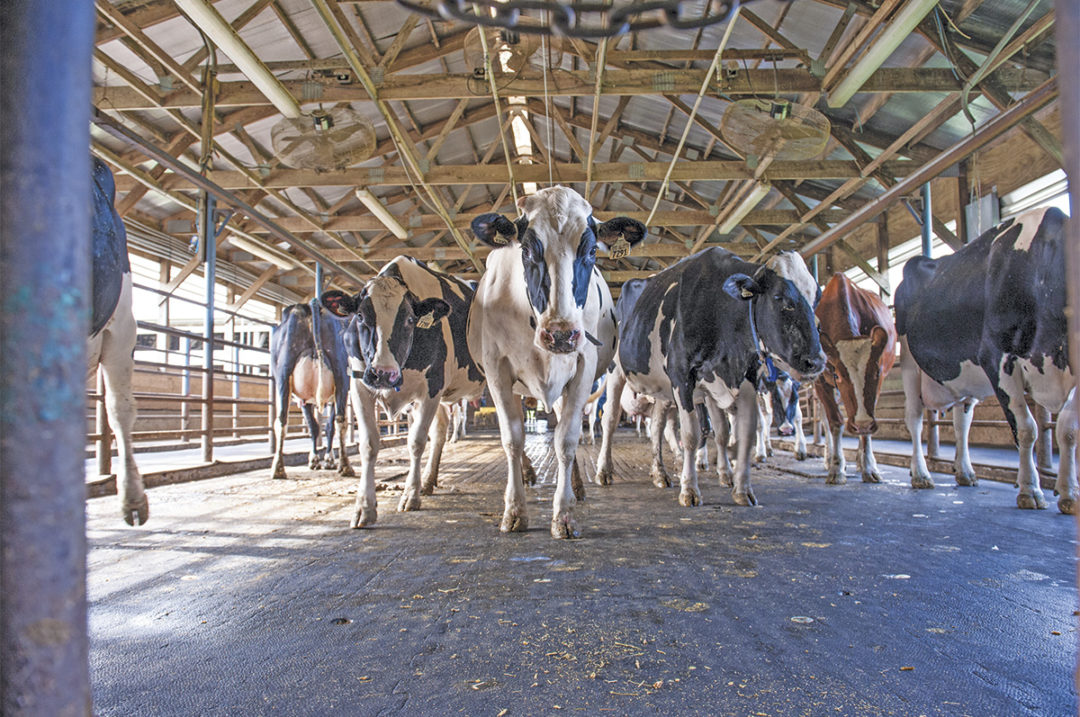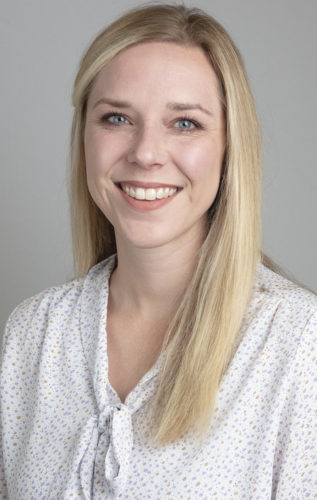Consider core practices in the dairy industry – such as sanitary milk handling, proper ventilation in calf hutches, formulating rations with byproducts – and it may come as a surprise that one accredited institution was instrumental in establishing these management techniques which have long been thought of as common sense in the dairy industry.
Since the late 1800s, South Dakota State University (SDSU) has played a pivotal role in the advancement of dairy farming, and it would be remiss not to mention the thousands of undergraduate students who have gone on to develop a career as dairy producers or industry allies along the I-29 Corridor and across the nation.
Despite a decision to close the SDSU Dairy Research and Training Facility in June, faculty remain vigilant in securing the college’s place in industry progress.
“There are a lot of factors that have contributed in a positive way to the success and growth of the industry, and I believe we’ve been a part of that,” said Dr. Joseph Cassady, South Dakota Corn Endowed Dean for the College of Agriculture, Food and Environmental Sciences. “There’s frustration and disappointment with the decision, and I am not dismissive of that, but I am also confident we can build a strong and impactful program even though it will look different than it did in the past.”
Cassady penned a letter to faculty, staff and students in late January announcing the anticipated closure of the 125-cow dairy farm. The announcement followed a failed twofold process of positioning the farm for the industry’s future.
In 2021, the South Dakota legislature allocated $7.5 million in a dollar-for-dollar match toward the building of a state-of-the-art dairy research and training facility on the Brookings campus. The institution had four years to secure donors for their portion of the funds which would result in $15 million put toward the new build. Unfortunately, finding those major donors was futile.
“We had a strategy, one that’s proven, of finding two to four donors who contribute upward of 80 percent of the funds and then use the masses to fund the remaining 20 percent,” Cassady said. “Despite our best efforts, we were unsuccessful in identifying those major donors.”
South Dakota Dairy Producers pledged $500,000 to support the project and its purpose.
“Looking at the size of the contribution and their resources available, we realize that is a substantial contribution,” Cassady said. “There were others too, private individuals, who contributed what they could and we’re appreciative of that.”
Additionally, specs for such a design – one that would meet research needs and be in line with forward-thinking dairy production – far surpassed the institution’s budget.
Cassady said the original design for a new build was for a 500-cow dairy, but a revised proposal suggested only adding an additional 130 cows to the existing herd. The financial commitment was too great, and the current dairy facilities are waning.
“We have a dairy well beyond its intended useful life, and reluctantly, there’s not a viable path forward right now,” Cassady said. “The dairy industry is growing so rapidly with most of the modern, state-of-the-art dairies looking much different than ours.”
Two-thirds of the farm was built in the 1960s with a parlor and freestall barn built in 1994.
The present-day farm is a predominantly Holstein herd with training and research focused primarily on nutrition and reproduction. Milk from the farm is used for dairy food processing at the renowned Davis Dairy Plant.
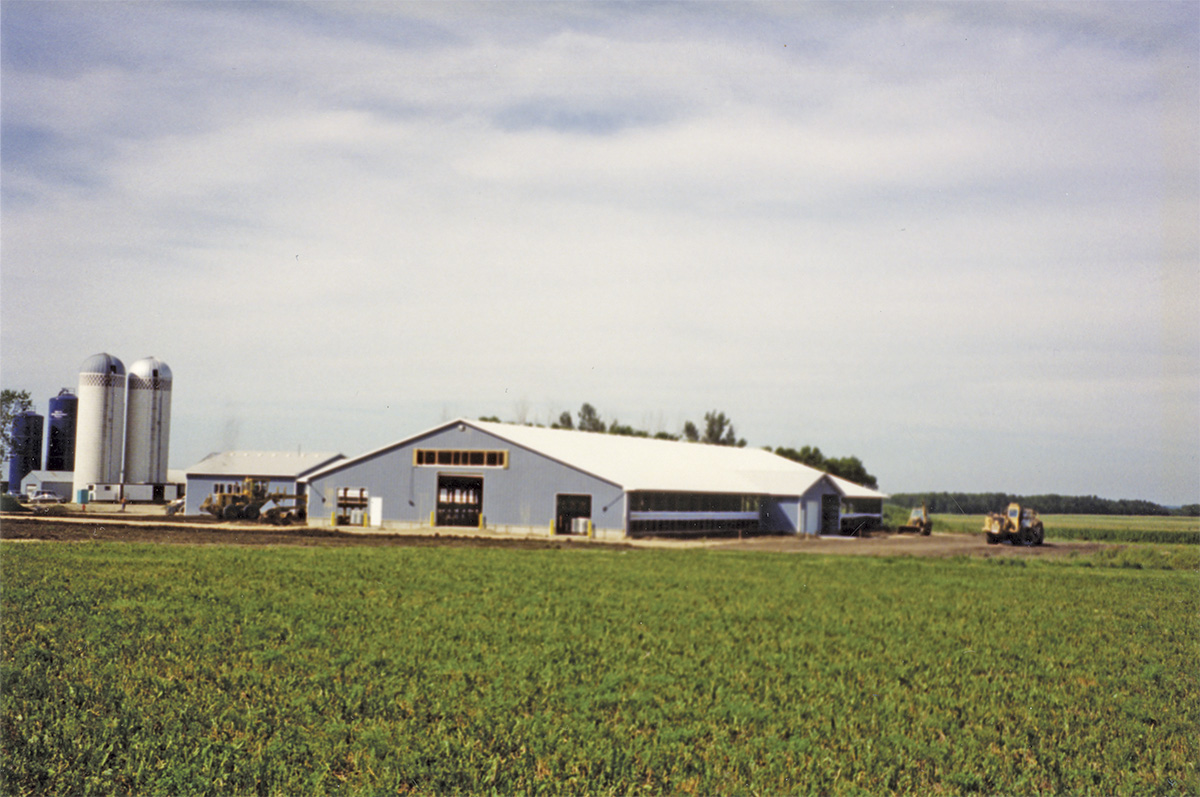
The latest addition to the SDSU dairy facility was a parlor and freestall barn built in 1994. Photo courtesy of South Dakota State University Archives.
Alumni speak to farm’s legacy
Despite the anticipated closure, Cassady and those who have gone through the dairy science program are encouraged given the college’s rich history of developing chief industry research and notable leaders.
“It’s obvious the department, program and farm have contributed to the development and education of quite a number of people who are now leaders in the industry,” Cassady said.
Lyle Kruse agreed.
“As one of the top dairy science programs in the U.S., the dairy farm had a significant impact on the industry as a foundation for practical teaching applications for thousands of students who went into the industry as producers or in supporting roles,” he said.
Kruse is a 1978 alumnus of the college and currently serves as vice president of U.S. market development for Select Sires.
During Kruse’s time as an undergraduate, he utilized the farm for class projects, practicing for dairy cattle judging and preparing for the annual Little International competition.
Ted Norling, a dairy producer in South Dakota, also has fond memories of the farm during his studies. Like Kruse, he was involved in dairy cattle judging, friendly competitions and even summer camps where the dairy space and animals were used to give a glimpse of the industry to adolescents.
Norling’s time as a student and student-employee have also proven beneficial, as he now dairy farms with his dad and brother.
“As students, the farm provided us the opportunity to learn cow and calf care and treatment, proper milking procedures, record-keeping, feeding, maintenance and more,” Norling said. “We observed and interacted with veterinarians and hoof trimmers. We also worked alongside research students, helping make sure their research animals were fed properly.”
Soon after the construction of the parlor and freestall barn, research was published on the feeding of distillers grains and use of byproducts. At the time, it was leading knowledge for the industry to rely on.
“That’s just one example,” Cassady said. “It was impactful and meaningful and helped the industry.”
Jeff DeFrain recalls his time as a graduate student on the farm, focusing on nutrition research. He conducted six research trials from 2001 to 2004, with five resulting in peer-reviewed publications, and received his Ph.D. under Dr. Arnold Hippen.
“The farm made significant contributions to the dairy industry with controlled research and equipping the industry with graduates who had firsthand experience,” he said. “With fewer and less students coming from farms, the dairy was delivering quality students to the industry alongside the controlled research.”
DeFrain engages in nutrition and management consulting for Progressive Dairy Solutions with clients in South Dakota and other states in the central U.S.
Notable research to come from SDSU includes whey utilization in cattle feed and dairy products, feed applications of distillers grains as well as efficiency of production data collection for nutrition management research.
The next chapter
The closing of the research and training facility does not alter the institution’s purpose of providing quality education and research opportunities for individuals looking to propel their career in the dairy industry. The degree program as well as the manufacturing plant will remain.
“SDSU has a long history of providing top graduates in the dairy science program, both in production and manufacturing, and I see no reason why that will change,” Kruse said.
Albeit it will look different.
“Everyone is proud of the South Dakota dairy industry, proud of this program and proud of the farm,” Cassady said. “We need to work together to achieve that brighter future. It’s going to take time, and the pathway to success will look different, but I’m confident we can continue building on a strong and impactful program.”
Cassady likened the situation to the university’s distinguished pre-nursing and nursing programs.
“They’re successful because of our partnerships with hospitals, clinics and providers,” he said. “With dairy, we’ll take a similar approach.”
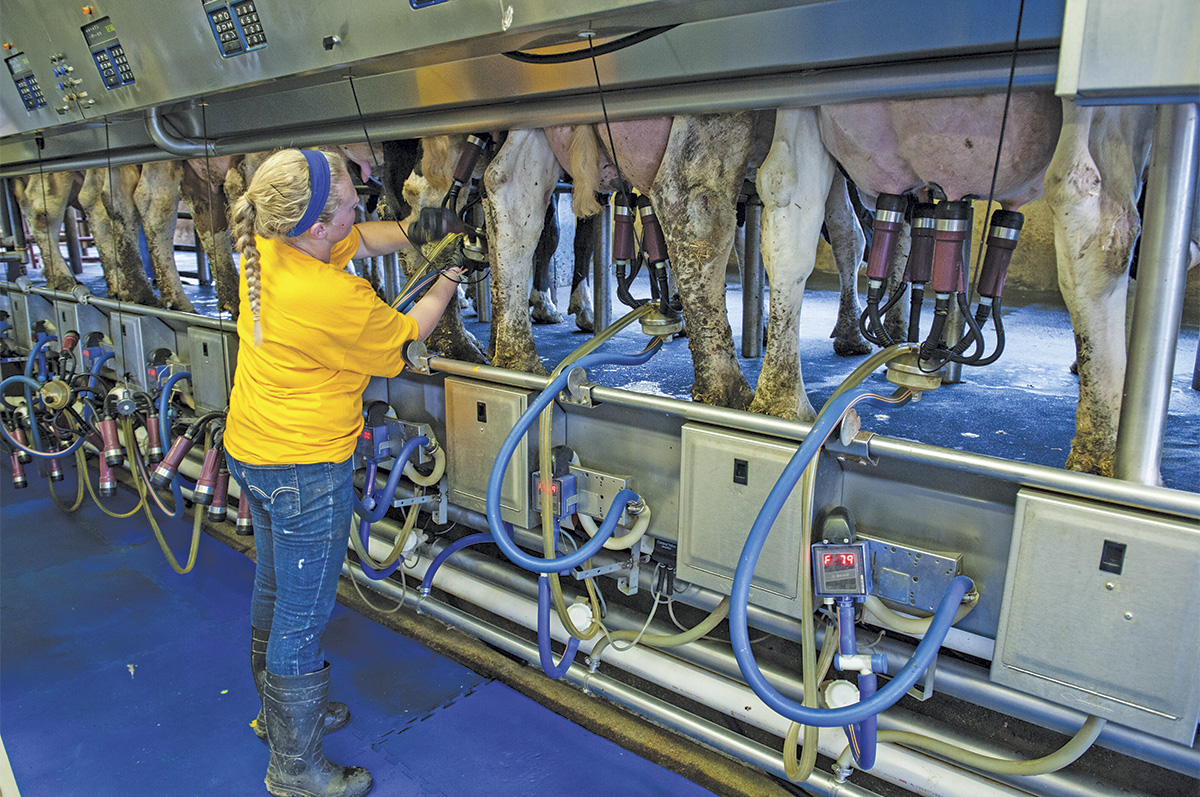
A student milks at the South Dakota State University Dairy Research and Training Facility. Photo courtesy of South Dakota State University Archives.
While plans are not set in stone yet, the college dean is hopeful to foster partnerships with local dairies and allied industry members to provide quality education and research for both undergraduate and graduate students.
For many, the formula for success will rely heavily on providing high-caliber classroom education and hands-on experience when available, leaning into the benefits of the industry that surrounds SDSU.
“If the dairy science department is going to be a leader in the industry, they need to stay on the cutting edge with teaching and facilities,” Norling said.
Kruse agreed.
“Unfortunately, the announcement of the dairy facility closing makes SDSU one of many land-grant universities across the U.S. that have closed their dairy operations during my career,” he said. “The reality is: With the growth of the dairy industry in the I-29 Corridor, there have been a significant number of modern, large dairies established which can hopefully be tapped to provide some of the practical dairy operation and research needs in the future.”
The rich history of SDSU’s Dairy Research and Training Facility is one that has been foundational to the progress of the industry. Such a legacy will not soon be dismissed as the next chapter is written for this dairy program.
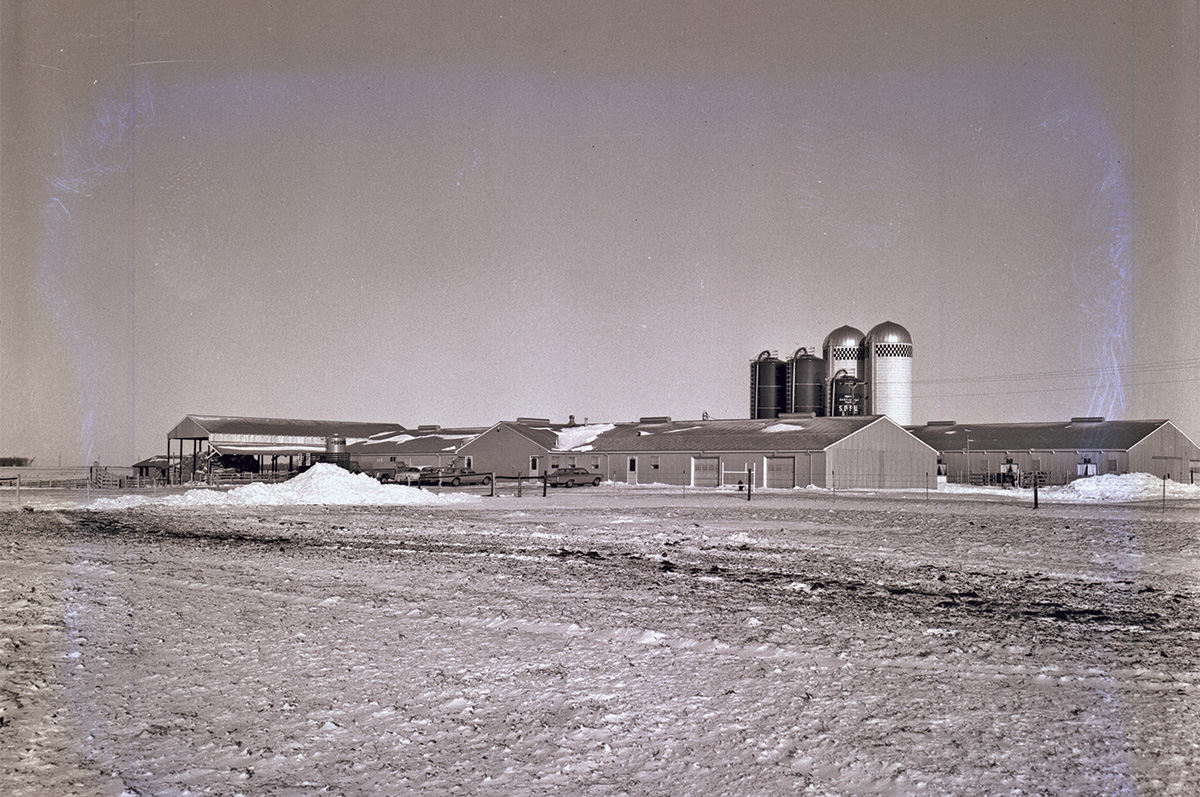 The South Dakota State University Dairy Research and Training Facility in 1967. Courtesy of South Dakota State University Archives.
The South Dakota State University Dairy Research and Training Facility in 1967. Courtesy of South Dakota State University Archives.Milestones of the SDSU Dairy Research and Training Facility
1896 The department acquires a herd of 25 registered dairy cows representing the six major dairy breeds.
1941 The first milking parlor in South Dakota is installed in the dairy barn. The equipment permits research on sanitary milk handling.
1950s Scientists experiment with individual outdoor hutches for dairy calf rearing. Calf losses to pneumonia in the college dairy herd drop to virtually zero from 40%, and the designs of the hutches are shared with other states and countries.
1970 Dairy scientists carve out their position as acknowledged world leaders in whey utilization research. Over the next 30 years, SDSU scientists develop applications in cattle feed and dairy products.
1988 The department opens the Dairy Research Center, one of six in the nation, in partnership with the University of Minnesota. The center speeds up the collection of production data for nutrition management research.
1991 The department develops feed applications for distillers grains, the byproduct of ethanol manufacturing.
1993 The dairy barn, state-of-the-art for the time, allows the department to continue its nutrition research. It is one of the most advanced university dairy units in the nation.
2004 SDSU is the largest land-grant institution with a dairy department that taught and researched in both dairy production and manufacturing, offering both undergraduate and graduate degrees.
